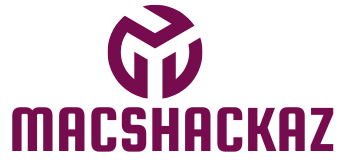The Engagement Rate is a foundational metric in digital marketing and social media analytics, revealing how actively your target audience interacts with your content. It goes beyond mere exposure (reach or impressions) to measure the genuine interest and connection your content fosters. A consistently high Engagement Rate is a clear indicator that your content resonates, leading to improved algorithmic visibility, stronger audience relationships, and ultimately, better conversion performance. Therefore, understanding the importance, correct calculation methods, and industry benchmarks of the Engagement Rate is absolutely critical for any data-driven marketing strategy.
| Metric Aspect | Key Takeaway / Value Proposition | Semantic Keyword Focus |
| Importance | Validates content quality, drives algorithmic promotion (higher visibility), strengthens customer loyalty, and directly impacts marketing ROI. | Content Performance, Audience Resonance, Algorithmic Visibility, Marketing ROI |
| Core Calculation | The fundamental formula involves dividing total user engagements (actions) by a specific audience base (Followers, Reach, or Impressions), multiplied by 100 to get a percentage. | Engagement Rate Formula, Social Media Analytics, Marketing Metrics, Performance Measurement |
| Benchmarks (Average) | A “good” social media ER typically falls between 1% and 3.5%, though this varies significantly by platform, industry, and account size. | Industry Benchmarks, Average Engagement Rate, Social Media Strategy, Platform Specific Data |
Table of Contents
Toggle
Why Engagement Rate is a Critical Performance Metric
In the vast digital landscape, simply reaching an audience isn’t enough; you need to captivate them. This is where the Engagement Rate becomes paramount. It serves as a vital Key Performance Indicator (KPI) for measuring the effectiveness of your content marketing efforts.
- Algorithmic Favor: Social media platforms prioritize and reward content that generates high interaction (likes, comments, shares, saves). A strong ER signals to the platform’s algorithm that your content is valuable, resulting in greater organic algorithmic visibility and organic reach.
- Audience Quality: Unlike the follower count, ER provides a truer measure of your active, dedicated audience. It indicates the strength of the audience-content relationship and the depth of the connection you have with your community.
- Content Optimization: Analyzing the ER per post or content type clearly highlights what content resonates most effectively. This actionable insight is essential for refining your content strategy and improving future creative assets.
- Conversion and ROI: Engaged users are significantly more likely to convert into leads or customers. A high ER is strongly correlated with improved conversion rates and a higher Marketing ROI because you’re spending resources on an audience that is genuinely interested.
Calculating the Engagement Rate (ER) Correctly
The concept of an Engagement Rate is straightforward, but its calculation can be complex because the denominator (the audience base) can change depending on what you want to measure. Total Engagements generally include likes, comments, shares, saves, and clicks. The standard Engagement Rate Formula is presented below, along with its most common variations:
| Calculation Type | Chosen Audience Metric (Denominator) | When to Use |
| ER by Reach (ERR) | Unique users who saw the content (Reach). | Most accurate measure of post-specific performance for those who actually saw it. |
| ER by Followers | Total Followers on the account. | Best for general profile health tracking and comparing your profile’s performance over time. |
| ER by Impressions | Total times the content was displayed (Impressions). | Useful for evaluating the efficiency of paid (advertised) content, as impressions is a key ad metric. |
For example, if a post received 500 Total Engagements and was seen by 10,000 Unique Users (Reach), the ER by Reach would be: .
Understanding Engagement Rate Benchmarks
When evaluating your performance, context is everything. An ER of 4% might be outstanding on one platform but average on another. Therefore, comparing your results against industry benchmarks and platform-specific averages is vital for setting realistic performance goals.
Generally, a healthy social media engagement rate for most accounts falls within a specific range:
- Low: Below 1.0%
- Average / Solid: 1.0% to 3.5%
- Strong: 3.5% to 5.0%
- Exceptional: Above 5.0%
However, these figures are just rough guides. It’s important to look at platform-specific data and also consider the audience size, as smaller accounts often see higher rates:
- Instagram (General Average): Varies, but often cited around 1.0% to 4.5% (Nano-influencers often see higher rates).
- Facebook (General Average): Typically lower, often between 0.5% and 2.0%.
- LinkedIn (General Average): Often cited around 2.0% to 5.0%, particularly for thought leadership content.
A human-centered tip: Don’t get disheartened if your numbers don’t instantly hit the “exceptional” mark. The real value of the Engagement Rate isn’t the number itself, but in the story it tells about your audience. Consistency in tracking and an iterative approach to improving based on what your specific audience loves will always beat chasing a generic benchmark. Focus on creating value, and the engagement will follow.




